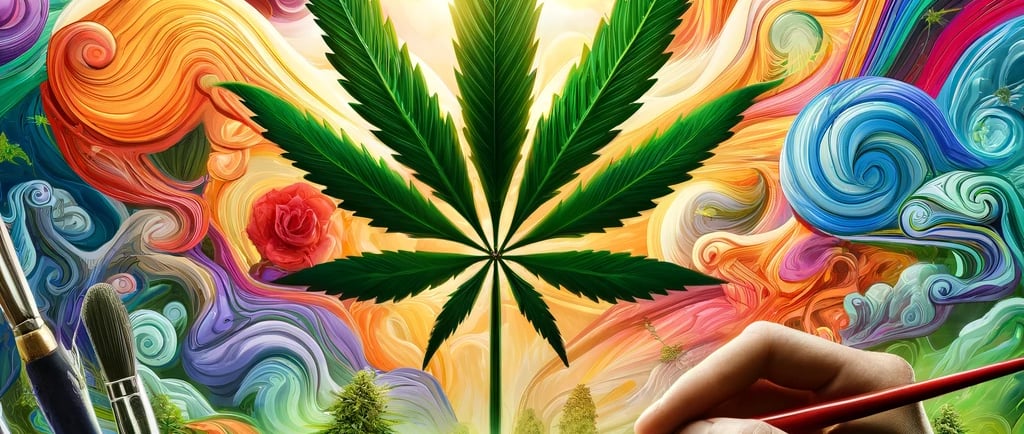Cannabis and Modern Art: Exploring the Green Muse
The intersection between cannabis and modern art is a captivating blend of cultural evolution, creative expression, and societal commentary. This relationship has not only influenced individual artists but has also left an indelible mark on various art movements throughout the 20th and 21st centuries. This article delves into the role of cannabis as a muse and medium in modern art, exploring its impact on artists, their work, and the broader cultural landscape.
CANNABIS GUIDE
4/6/20242 min read


The Historical Context
The use of cannabis for inspiration is not a modern concept; it traces back to ancient civilizations. However, its influence on contemporary art became particularly notable with the advent of the counterculture movements of the 1960s and 70s. During this period, artists sought to break free from traditional constraints, exploring new forms of expression and consciousness. Cannabis acted as a catalyst for creativity, allowing artists to explore altered states of mind and produce work that challenged societal norms.
Cannabis in the Counterculture Movement
The counterculture movement, with its rejection of conventional values and exploration of new ways of living, embraced cannabis as a symbol of freedom and resistance. Artists like Peter Max and Robert Crumb used cannabis-inspired imagery to critique societal issues, from war and consumerism to civil rights and environmentalism. Their work not only reflected the zeitgeist of the era but also cemented cannabis's role in the cultural vocabulary of modern art.
The Psychedelic Art Revolution
Cannabis, alongside other psychoactive substances, played a pivotal role in the psychedelic art movement. This movement was characterized by vibrant colors, complex patterns, and surreal imagery, aiming to replicate the psychedelic experience. Artists like Victor Moscoso and Rick Griffin, influenced by their own experiences with cannabis and psychedelics, created posters, album covers, and artworks that became icons of the era, blending artistic innovation with social commentary.
Contemporary Cannabis Art
In the contemporary art scene, cannabis continues to inspire a diverse array of artists and mediums. From painting and sculpture to digital art and installations, artists utilize cannabis both as a subject and a tool for creativity. Works by artists such as Tony Greenhand, who crafts intricate sculptures from cannabis leaves, and Richard Prince, with his "High Times" series, reflect the evolving perception of cannabis in society and its integration into mainstream culture.
Cannabis Art and Social Commentary
Modern cannabis art often carries a strong social and political message, reflecting ongoing debates around legalization, medicinal use, and the war on drugs. Artists use their platforms to advocate for policy change, challenge stigma, and highlight the impact of cannabis prohibition on communities. Through exhibitions, public installations, and collaborations with cannabis advocacy groups, artists contribute to the broader dialogue about cannabis, art, and society.
The Impact on Artistic Communities
The relationship between cannabis and art has fostered unique communities and spaces where artists share ideas, collaborate, and exhibit their work. Cannabis-friendly art galleries, cafes, and festivals not only showcase cannabis-inspired art but also serve as hubs for cultural exchange and activism, further blurring the lines between art, society, and cannabis culture.
Conclusion
Cannabis's influence on modern art is a testament to its power as a muse, medium, and message. As societal attitudes towards cannabis continue to evolve, so too will its role in the art world. Whether through direct inspiration, thematic exploration, or social commentary, cannabis and art share a symbiotic relationship, each enhancing the understanding and appreciation of the other. As we move forward, the green muse is poised to inspire new generations of artists, continuing to shape the landscape of modern art in unpredictable and exciting ways.
